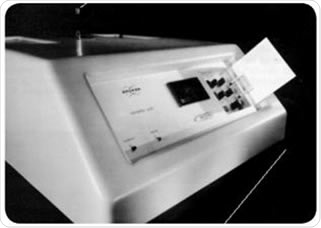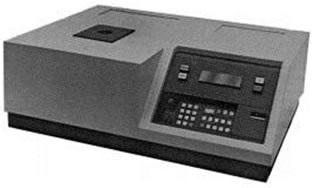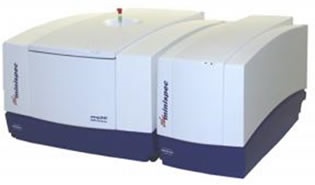Unilever specializes in supplying fast-moving consumer goods and has a collection of over 20,000 patents and patent applications. However, the need for precise assessment of solid fat content and for fast and robust evaluation of safety and quality specifications, present significant challenges.
The TD-NMR Solution
To overcome these challenges, Unilever selected Bruker BioSpin’s minispec TD-NMR system to accurately assess the safety and quality specifications of food products. This benchtop equipment facilitates important and quick decision making in both development and manufacturing centers. The instrumentation is designed to cut down operational time requirements, enhance the precision of measurements and achieve high process efficiency.
A History of Collaboration
The partnership between Unilever and Bruker dates back as far as 1970. Although Unilever was already using Bruker’s advanced NMR systems, the company was looking for a suitable way of investigating the liquid or solid content of fat. Other methods available at the time such as differential scanning calorimetry and dilatometry proved ineffective for this application. High resolution NMR presented another potential option, but this was not a cost-effective solution for this individual application that needed to be used in Unilever fat factories and refineries worldwide.
Range of TD-NMR Systems
Both Unilever and Bruker envisaged a system that would be small and easy to operate in a traditional food laboratory to determine the melting curve of fat compositions. Such a system would serve as ideal for producing optimum fat compositions that met customers’ needs, while also enabling effective control of fat and oil production. The p20, which was launched in 1972, was the first minispec Time-Domain NMR system that met all of these criteria. This model was soon replaced with an improved version called minispec p20i (Figure 1) in 1973.

Figure 1. minispec p20i for SFC analysis as introduced in 1973. Image Credit: Bruker BioSpin Group
In the mid-70s, microprocessor-based systems soon became a standard for analytical equipment. Bruker launched the award-winning minispec pc20 (Figure 2) and the pc120, which both built on this latest technology and included enhanced ergonomics, updated software and other applications.

Figure 2. minispec pc20 for SFC measurements introduced in 1980. Image Credit: Bruker BioSpin Group
Following the success of SFC application, Unilever and Bruker worked collaboratively on a novel method to study the droplet size distribution in water and oil emulsions, such as diet spreads and margarines. Using NMR, it was possible to measure the emulsion without having to alter its matrix. This novel application was initially run on the pc120 instruments using a range of pulsed field gradient experiments and mathematical computation of the log-normal droplet size distribution.
In the σ-var technique, the gradient pulse lengths are changed over a range of TD-NMR experiments. The results obtained give a clear indication of the product’s current state, as well as its consumption and shelf life. Unilever currently applies this method in all its spreads-producing centers. Depending on the NMR signal strength produced by the sample, complete evaluation of the droplet size using TD-NMR based on the σ-var technique, is usually achieved in around 5 to 10 minutes. A uni-modal, log-normal droplet size distribution is usually assumed, which offers a good approximation for standard consumer food products.
SFC and Water Droplet Size Analysis
In order to meet Unilever’s specifications, Bruker developed combined systems for SFC and water droplet size analysis. The NMS minispec series included a large LCD display, which made it possible to view the NMR signal without using an oscilloscope. A ring test protocol was used when the popular minispec mq-series - PC-controlled TD-NMR instrument was launched in 1999 (Figure 3).

Figure 3. minispec mq20 for SFC as well as droplet size analysis introduced in 1999. Image Credit: Bruker BioSpin Group
In 2001, oil in water emulsions such as soft cheese, salad dressings, and mayonnaise were tested using the TD-NMR technology. Sometimes, the droplets phase in these emulsions was of a low concentration, which led Bruker to design a high sensitivity probe that could be used in all droplet applications, including those with only a few percent of droplets phase.
In order to enhance speed, the number of data points for curve fitting and the minimum concentration of droplets phase, Unilever developed another droplet size approach in early 2000. Instead of changing the length of the gradient pulses, the gradient strength was altered instead.
Conclusion
Today, Unilever factories house over 40 Bruker minispec systems Worldwide. At the company’s six research and development centers, the minispec NMR benchtop instruments are key to rapid decision-making in new product projects. These systems have proved extremely useful for the accurate assessment of quality and safety specifications of food products and materials. This technology has therefore always been made available to the food industry on a global scale.
About Bruker BioSpin Group
The Bruker BioSpin Group designs, manufactures, and distributes advanced scientific instruments based on magnetic resonance and preclinical imaging technologies. These include our industry-leading NMR and EPR spectrometers, as well as imaging systems utilizing MRI, PET, SPECT, CT, Optical and MPI modalities. The Group also offers integrated software solutions and automation tools to support digital transformation across research and quality control environments.
Bruker BioSpin’s customers in academic, government, industrial, and pharmaceutical sectors rely on these technologies to gain detailed insights into molecular structure, dynamics, and interactions. Our solutions play a key role in structural biology, drug discovery, disease research, metabolomics, and advanced materials analysis. Recent investments in lab automation, optical imaging, and contract research services further strengthen our ability to support evolving customer needs and enable scientific innovation.
Sponsored Content Policy: News-Medical.net publishes articles and related content that may be derived from sources where we have existing commercial relationships, provided such content adds value to the core editorial ethos of News-Medical.Net which is to educate and inform site visitors interested in medical research, science, medical devices and treatments.